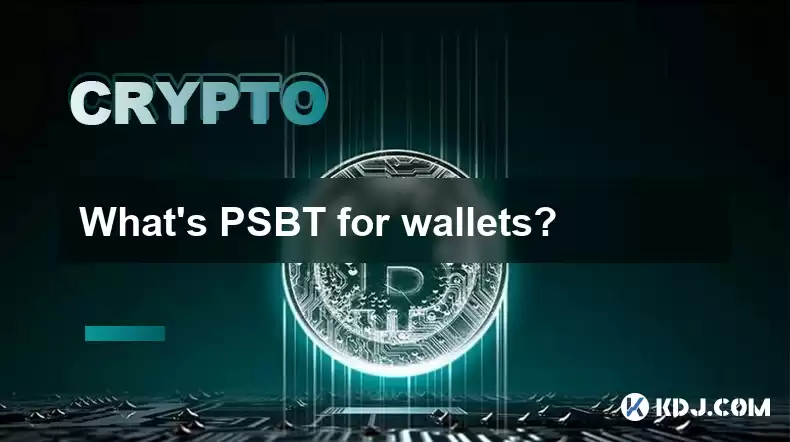-
 Bitcoin
Bitcoin $118300
1.01% -
 Ethereum
Ethereum $4215
0.69% -
 XRP
XRP $3.198
-3.83% -
 Tether USDt
Tether USDt $1.000
-0.01% -
 BNB
BNB $803.4
-0.53% -
 Solana
Solana $180.3
-0.67% -
 USDC
USDC $0.9998
-0.01% -
 Dogecoin
Dogecoin $0.2334
-1.49% -
 TRON
TRON $0.3394
0.86% -
 Cardano
Cardano $0.7980
-1.45% -
 Chainlink
Chainlink $22.19
6.65% -
 Hyperliquid
Hyperliquid $43.41
0.13% -
 Stellar
Stellar $0.4407
-3.13% -
 Sui
Sui $3.843
-2.24% -
 Bitcoin Cash
Bitcoin Cash $564.7
-3.74% -
 Hedera
Hedera $0.2588
-3.41% -
 Ethena USDe
Ethena USDe $1.001
0.00% -
 Avalanche
Avalanche $23.64
-3.37% -
 Litecoin
Litecoin $120.0
-4.01% -
 Toncoin
Toncoin $3.342
-1.11% -
 UNUS SED LEO
UNUS SED LEO $9.038
0.60% -
 Shiba Inu
Shiba Inu $0.00001347
-0.81% -
 Uniswap
Uniswap $10.69
-4.58% -
 Polkadot
Polkadot $4.034
-1.30% -
 Dai
Dai $1.000
0.01% -
 Bitget Token
Bitget Token $4.472
-1.52% -
 Cronos
Cronos $0.1571
-3.04% -
 Pepe
Pepe $0.00001207
-2.21% -
 Monero
Monero $273.8
-3.19% -
 Ethena
Ethena $0.7520
2.75%
What's PSBT for wallets?
PSBT empowers wallets with secure offline transaction signing, multi-signature support, and seamless hardware wallet integration.
Feb 06, 2025 at 07:12 am

What is PSBT for Wallets?
Key Points:
- PSBT is a standardized protocol for partially signed Bitcoin transactions.
- It allows multiple parties to collaboratively sign a transaction without revealing their private keys.
- Wallets that support PSBT can securely sign and send transactions even if the source wallet is offline.
- PSBT facilitates offline transaction signing, multi-signature setups, and hardware wallet integration.
Detailed Explanation:
1. Introduction to PSBT
Partially Signed Bitcoin Transaction (PSBT) is a technical standard that enables the secure and collaborative signing of Bitcoin transactions. It allows multiple parties, known as signers, to contribute their signatures to a transaction without compromising the security of their private keys.
2. How PSBT Works
A PSBT consists of the following elements:
- The raw, unsigned Bitcoin transaction.
- The signature data from each signer.
- A flag indicating which signers have already signed.
The PSBT is passed among signers, who add their signatures without needing to know the private keys of other signers. Once all signers have contributed their signatures, the PSBT can be finalized and broadcast to the Bitcoin network for processing.
3. Benefits of PSBT for Wallets
PSBT brings several benefits to wallets, including:
- Offline Transaction Signing: Wallets that support PSBT can sign transactions even when the source wallet is offline. This enhances security by preventing attackers from accessing private keys stored on the wallet.
- Multi-Signature Support: PSBT facilitates multi-signature setups, where multiple signers are required to approve a transaction. This provides additional layers of security for high-value transactions.
- Hardware Wallet Integration: PSBT enables easy integration with hardware wallets, allowing users to sign transactions securely without exposing their private keys to the software wallet.
4. How to Use PSBT with Wallets
Using PSBT with wallets involves the following steps:
- Generate a PSBT from the wallet.
- Share the PSBT with other signers.
- Signers add their signatures and return the updated PSBT.
- Finalize the PSBT by combining all signatures.
- Broadcast the final PSBT to the Bitcoin network.
5. Security Considerations with PSBT
While PSBT enables secure transaction signing, it is crucial to maintain good security practices:
- Ensure that the PSBT is only shared with trusted signers.
- Use strong passphrases and store them securely.
- Avoid signing PSBTs from untrusted sources.
FAQs:
Q: What are the top wallets that support PSBT?
A: Top wallets that support PSBT include:
- Electrum
- Bitcoin Core
- Wasabi Wallet
- BlueWallet
- Sparrow Wallet
Q: How can I export a PSBT from my wallet?
A: The steps to export a PSBT vary depending on the wallet you are using. Generally, you can find the export option under the "Transaction" or "Send" tab.
Q: What is the difference between PSBT and RBF?
A: PSBT is a protocol for partially signing Bitcoin transactions, while RBF (Replace-By-Fee) is a mechanism for replacing an unconfirmed transaction with a new one with a higher fee. PSBT facilitates secure multi-signature setups, while RBF is used to expedite transaction confirmation.
Disclaimer:info@kdj.com
The information provided is not trading advice. kdj.com does not assume any responsibility for any investments made based on the information provided in this article. Cryptocurrencies are highly volatile and it is highly recommended that you invest with caution after thorough research!
If you believe that the content used on this website infringes your copyright, please contact us immediately (info@kdj.com) and we will delete it promptly.
- Cold Wallet's Hot Streak: Acquisition, User Growth, and How it Stacks Up Against Ethereum & XRP
- 2025-08-10 20:30:16
- Bitcoin, Cloud Mining, and Crypto Earnings: What's Hot in 2025?
- 2025-08-10 20:50:12
- Presale Cryptos Face-Off: BlockDAG, TOKEN6900, and the Hunt for the Next Big Thing
- 2025-08-10 20:55:12
- DeFi, Meme Coins, and 2025: Navigating the Crypto Landscape
- 2025-08-10 20:30:16
- Cardano, Returns, and Trade Deals: A New Yorker's Take
- 2025-08-10 18:50:16
- Dogwifhat's Comeback: Solana Meme Coin Mania and Beyond!
- 2025-08-10 18:30:15
Related knowledge

What is Ethereum’s Slashing mechanism and how to punish malicious behavior?
Feb 20,2025 at 03:08am
Key PointsOverview of slashingDifferent types of slashing in EthereumIncentives and consequences of slashingIdentifying and reporting slashed validato...

What is the verifier node of Ethereum and how to become a verifier?
Feb 19,2025 at 06:00pm
The Verifier Node of Ethereum: A Comprehensive GuideKey Points:What is a Verifier Node?How to Become a Verifier NodeResponsibilities and Rewards of a ...

What is Ethereum’s staking, and how to participate and earn money?
Feb 19,2025 at 04:37pm
Key Points:Understanding Ethereum's Staking MechanismSteps to Participate in StakingBenefits and Rewards of StakingSecurity and Risk ConsiderationsTec...

What is Ethereum’s DAO (Decentralized Autonomous Organization) and how does it work?
Feb 20,2025 at 03:12am
Key PointsDefinition and Structure of a DAOGovernance and Decision-Making in DAOsBenefits and Use Cases of DAOsChallenges and Limitations of DAOsWhat ...

What is Ethereum's multi-signature wallet and how to improve security?
Feb 20,2025 at 02:18pm
Key Points:Understanding the Concept of a Multi-Signature WalletBenefits and Drawbacks of Multisig WalletsRequirements for Setting Up a Multisig Walle...

What is Ethereum's oracle and how to provide data for smart contracts?
Feb 21,2025 at 01:30am
Key Points:Understanding the concept of oracles in EthereumExploring different types of oraclesDetailed guide on how to provide data for smart contrac...

What is Ethereum’s Slashing mechanism and how to punish malicious behavior?
Feb 20,2025 at 03:08am
Key PointsOverview of slashingDifferent types of slashing in EthereumIncentives and consequences of slashingIdentifying and reporting slashed validato...

What is the verifier node of Ethereum and how to become a verifier?
Feb 19,2025 at 06:00pm
The Verifier Node of Ethereum: A Comprehensive GuideKey Points:What is a Verifier Node?How to Become a Verifier NodeResponsibilities and Rewards of a ...

What is Ethereum’s staking, and how to participate and earn money?
Feb 19,2025 at 04:37pm
Key Points:Understanding Ethereum's Staking MechanismSteps to Participate in StakingBenefits and Rewards of StakingSecurity and Risk ConsiderationsTec...

What is Ethereum’s DAO (Decentralized Autonomous Organization) and how does it work?
Feb 20,2025 at 03:12am
Key PointsDefinition and Structure of a DAOGovernance and Decision-Making in DAOsBenefits and Use Cases of DAOsChallenges and Limitations of DAOsWhat ...

What is Ethereum's multi-signature wallet and how to improve security?
Feb 20,2025 at 02:18pm
Key Points:Understanding the Concept of a Multi-Signature WalletBenefits and Drawbacks of Multisig WalletsRequirements for Setting Up a Multisig Walle...

What is Ethereum's oracle and how to provide data for smart contracts?
Feb 21,2025 at 01:30am
Key Points:Understanding the concept of oracles in EthereumExploring different types of oraclesDetailed guide on how to provide data for smart contrac...
See all articles

























































































